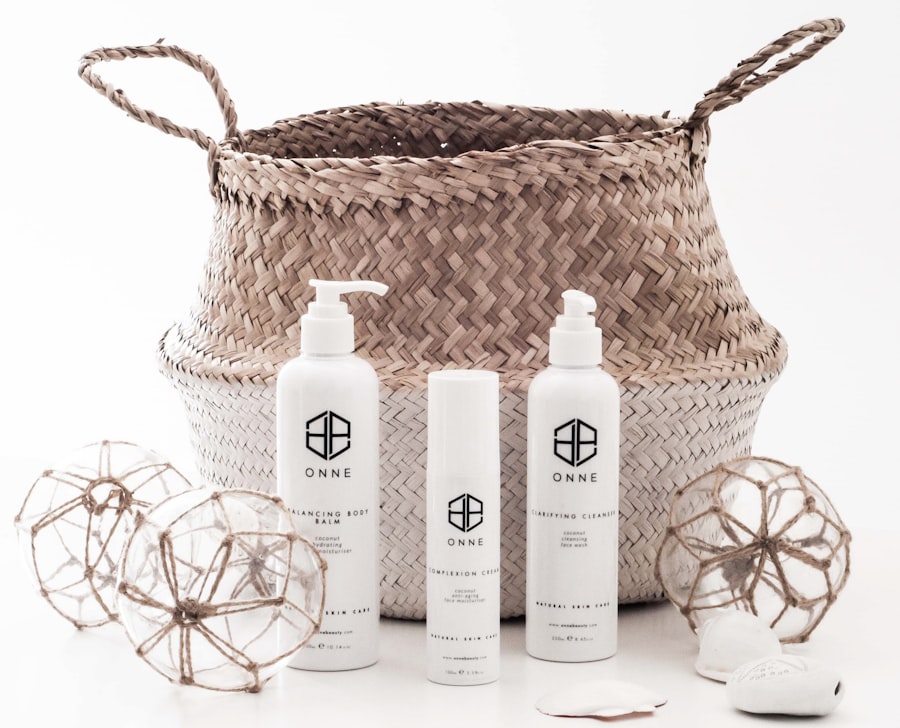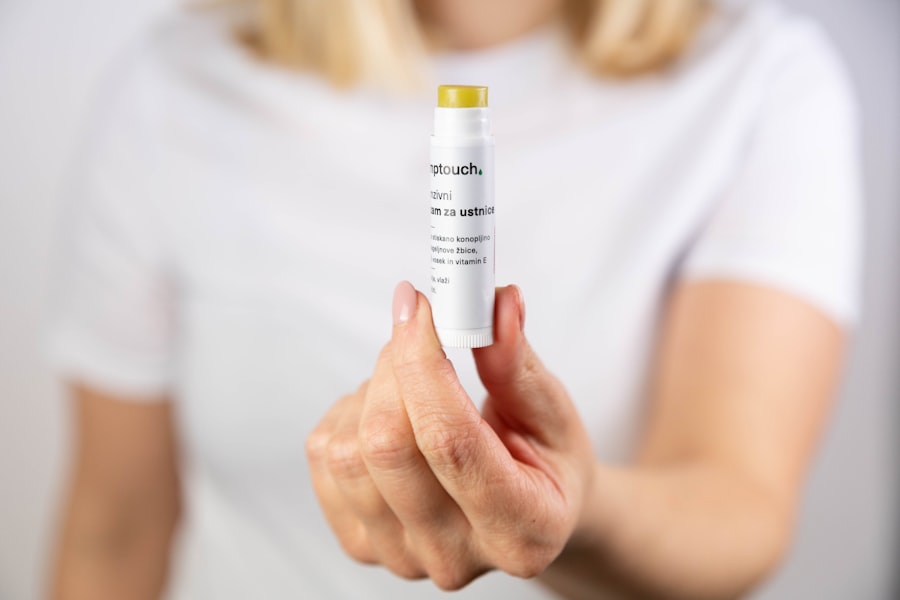When you get a tattoo, you are not just marking your skin; you are embarking on a journey of healing that requires your attention and care. The healing process typically unfolds in several stages, each with its own characteristics and requirements. Initially, your skin will go through an inflammatory phase, where redness, swelling, and tenderness may occur.
This is a natural response as your body works to repair the tiny wounds created by the tattoo needle. Understanding this phase is crucial because it sets the foundation for how well your tattoo will heal and ultimately look. As the days progress, you will notice that the initial inflammation begins to subside.
Your skin will start to scab over, which is a normal part of the healing process. During this time, it’s essential to resist the urge to pick at the scabs, as doing so can lead to uneven healing and may compromise the integrity of your tattoo. Instead, focus on nurturing your skin and allowing it to heal naturally.
This period can last anywhere from a week to several weeks, depending on various factors such as your skin type, the size of the tattoo, and how well you care for it during this time.
Key Takeaways
- The healing process of a tattoo involves stages of inflammation, peeling, and fading before the final result is achieved.
- Proper cleaning and moisturizing techniques are essential for promoting healing and preventing infection.
- Avoiding sun exposure and harsh chemicals can help preserve the color and detail of the tattoo.
- Managing discomfort and pain can be done through over-the-counter pain relievers and following aftercare instructions.
- Recognizing signs of infection such as excessive redness, swelling, and pus is crucial for seeking medical attention.
- Tips for preserving the tattoo’s color and detail include using sunscreen and avoiding prolonged water exposure.
- Long-term care and maintenance involve keeping the tattoo moisturized and protected from the sun.
- Consultation with a professional for personalized advice can provide tailored aftercare instructions for individual tattoos.
Proper cleaning and moisturizing techniques
One of the most critical aspects of tattoo aftercare is maintaining proper cleaning and moisturizing techniques. After getting your tattoo, your artist will likely recommend that you keep the area clean to prevent infection and promote healing. Start by gently washing the tattoo with mild soap and lukewarm water.
Avoid using any harsh scrubs or exfoliants, as these can irritate the skin and disrupt the healing process. Instead, use your fingertips to apply the soap, ensuring that you clean the area thoroughly but gently. Once you have cleaned your tattoo, it’s essential to pat it dry with a clean towel or let it air dry.
Avoid rubbing the area, as this can cause irritation. After drying, apply a thin layer of a fragrance-free moisturizer or a specialized tattoo aftercare ointment recommended by your artist. Keeping your tattoo moisturized is vital because it helps prevent excessive dryness and flaking, which can lead to scabbing and uneven healing.
Remember that less is more; applying too much product can suffocate the skin and hinder the healing process.
Avoiding sun exposure and harsh chemicals

Protecting your new tattoo from sun exposure is crucial during the healing process. Ultraviolet (UV) rays can cause fading and damage to your tattoo, especially when it is still fresh. For at least the first few weeks after getting inked, it’s best to keep your tattoo covered when you are outdoors.
If covering it isn’t possible, consider using a high-SPF sunscreen once the tattoo has fully healed. This will help shield your artwork from harmful rays and maintain its vibrancy over time. In addition to sun exposure, you should also be cautious about exposing your tattoo to harsh chemicals.
This includes products like chlorine found in swimming pools or hot tubs, as well as household cleaners and certain skincare products that contain alcohol or fragrances. These substances can irritate your skin and interfere with the healing process. Opt for gentle, natural products whenever possible, and always read labels to ensure that you are not applying anything that could harm your new ink.
Managing discomfort and pain
| Technique | Effectiveness | Side Effects |
|---|---|---|
| Medication | High | Potential for addiction |
| Physical Therapy | Moderate | Possible muscle soreness |
| Mindfulness | Low | None |
It’s not uncommon to experience some discomfort or pain after getting a tattoo, especially in the first few days. Your skin has undergone trauma, and it’s essential to manage this discomfort effectively. Over-the-counter pain relievers such as ibuprofen or acetaminophen can help alleviate any pain you may feel.
However, always follow the recommended dosage instructions and consult with a healthcare professional if you have any concerns about taking medication. In addition to medication, there are other methods you can employ to manage discomfort. Applying a cold compress to the area can help reduce swelling and numb any pain you may be experiencing.
Just be sure not to apply ice directly to your skin; instead, wrap ice in a cloth or use a cold pack designed for this purpose. Keeping your body hydrated by drinking plenty of water can also aid in the healing process and help minimize discomfort.
Recognizing signs of infection
While most tattoos heal without complications, it’s essential to be vigilant for signs of infection during the healing process. Common indicators include increased redness around the tattooed area, persistent swelling, warmth to the touch, or discharge that may be yellow or green in color.
Early intervention can prevent further complications and ensure that your tattoo heals properly. In addition to physical symptoms, pay attention to how you feel overall. If you develop a fever or experience chills alongside other symptoms, these could be signs of a more serious infection that requires immediate medical attention.
Trust your instincts; if something doesn’t feel right, don’t hesitate to reach out to a healthcare professional for guidance.
Tips for preserving the tattoo’s color and detail

Once your tattoo has healed, you’ll want to take steps to preserve its color and detail for years to come. One of the most effective ways to do this is by maintaining proper skincare routines. Regularly moisturizing the area will keep your skin hydrated and help prevent fading over time.
Look for products specifically designed for tattoos or those that are fragrance-free and gentle on sensitive skin. Another important factor in preserving your tattoo is protecting it from sun exposure. As mentioned earlier, UV rays can significantly fade tattoos over time.
Make it a habit to apply sunscreen with a high SPF whenever you’re going out in the sun, even on cloudy days. Additionally, consider wearing protective clothing or seeking shade when possible to minimize direct exposure.
Long-term care and maintenance
Long-term care for your tattoo goes beyond just keeping it moisturized and protected from the sun. Regularly exfoliating the skin around your tattoo can help maintain its vibrancy by removing dead skin cells that may dull its appearance. However, be cautious not to over-exfoliate; doing so can irritate the skin and lead to fading.
Incorporating a healthy lifestyle can also contribute to the longevity of your tattoo’s appearance. Staying hydrated by drinking plenty of water helps keep your skin supple and vibrant. A balanced diet rich in vitamins and minerals supports overall skin health as well.
Additionally, avoiding smoking and excessive alcohol consumption can prevent premature aging of your skin, which in turn helps maintain the clarity of your tattoo.
Consultation with a professional for personalized advice
While general aftercare tips are helpful, consulting with a professional tattoo artist or dermatologist can provide you with personalized advice tailored to your specific needs.
A professional can assess your unique situation and offer recommendations based on factors such as skin type, lifestyle, and the specific design of your tattoo.
Don’t hesitate to reach out for guidance if you have any concerns during the healing process or if you’re unsure about how to care for your tattoo long-term. A professional can help address any questions you may have about products to use or techniques that may be beneficial for preserving your ink’s beauty over time. Remember that investing in proper care now will pay off in maintaining the integrity of your artwork for years to come.
If you’re considering getting a facial tattoo, it’s important to also think about proper aftercare to ensure the best results. One helpful resource for tattoo enthusiasts is the r/tattoo subreddit, where you can find tips and advice on how to care for your new ink. For more information on skincare and beauty treatments, you can also check out In Laser Hair Removal for expert guidance.
FAQs
What is facial tattoo aftercare?
Facial tattoo aftercare refers to the specific care and maintenance required for tattoos on the face. This includes cleaning, moisturizing, and protecting the tattooed area to ensure proper healing and long-term preservation of the tattoo.
How should I clean my facial tattoo?
To clean a facial tattoo, use a mild, fragrance-free soap and lukewarm water. Gently wash the tattooed area with clean hands, being careful not to scrub or irritate the skin. Pat the area dry with a clean, soft towel.
What should I avoid during facial tattoo aftercare?
During facial tattoo aftercare, it is important to avoid exposing the tattooed area to direct sunlight, swimming pools, saunas, and excessive sweating. Additionally, refrain from picking or scratching the tattoo, and avoid using harsh skincare products or makeup on the area.
How long does it take for a facial tattoo to heal?
The healing time for a facial tattoo can vary depending on the individual and the size of the tattoo. Generally, facial tattoos take about 2-4 weeks to fully heal. It is important to follow proper aftercare instructions to ensure a smooth healing process.
Can I apply moisturizer to my facial tattoo?
Yes, it is important to keep the facial tattoo moisturized during the healing process. Use a gentle, fragrance-free moisturizer to keep the skin hydrated and prevent excessive dryness, but be sure to avoid over-moisturizing as this can hinder the healing process.





